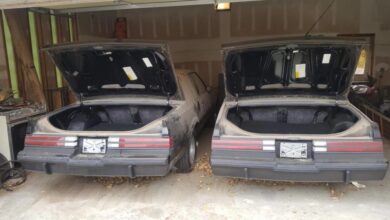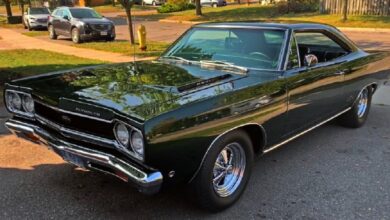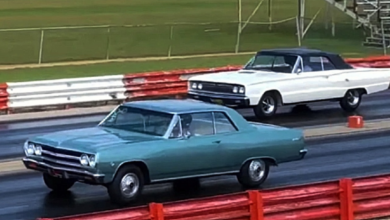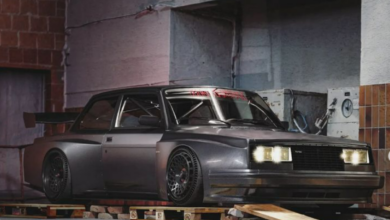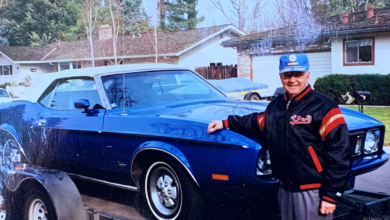Ford Thunderbird – One Of The Coolest Cars Ever
Here we have a car that was created by an auto industry that is famous for making six passenger boxes on wheels with a little power and even less style. The Thunderbird trashed all those conventional ideas and made a whole new set of rules in matter for second. The T-Bird had plenty of room…for only two people.
At that time, except for a few hand built roadsters, the US market for sports cars was virtually non-existent.
The Ford Thunderbird history.
In 1953 Chevrolet broke the ice with the Corvette but in two years they sold less than 4000 cars.
Those weren’t exactly the numbers that would lead anyone to believe that Americans were starving for sports cars.
But when Ford looked at the Corvette, they didn’t conclude that people didn’t like sports cars. They said, “People don’t want that Sports Car! We’ll give ‘em what they want.”
The editor of Year One’s Restoration Review, Keith Maney notes that “It’s important to realize that developing the Thunderbird, there was really no rule book to follow.
I mean, after all, American manufacturers didn’t build two seat cars until, of course, the Corvette came along. Since there were no hard and fast rules that needed to be followed, the engineers and the designers could really go wild. And of course, as everyone can see, they did a wonderful job.”
The Ford Thunderbird – A Personal Luxury Car
On October 22, 1954, Ford rolled out its version of the sports car and in every aspect it was American.
Ford named it a personal luxury car, from its deeply upholstered bucket seats to its engine turn dash with a full complement of gauges. The total look and feel was upscale and sporty. And America simply ate it up.
Comparisons between the Thunderbird and the Corvette were inevitable.
Both the Thunderbird and the Corvette were built on 102 inch wheel bases, but the T-Bird measured almost eight inches longer than the Corvette. It was unmistakably Ford from bumper to bumper. Its low stance almost six inches lower than a Ford Fairlane and its lack of heavy chrome and styling contrivances made it refreshingly unique from anything else in Ford’s line or anyone else’s for that matter.
Keith Maney goes on: “It’s interesting to see how the Ford designers did such a good job of coming up with a sporty two seat automobile and yet maintained a lot of family resemblance with the other Ford products of the time. If you compare these cars with a Corvette you’ll notice that the Ford has a long hood, a sweeping deck with fins, it’s a very exciting shape. Another big difference, obviously, in the design and style of the Thunderbird as compared to the Corvette is Ford’s choice of body material. They made these cars out of steel as opposed to fiberglass. I think they did that because they planned to sell a bunch of them.”
Ford didn’t position the T-Bird as a sports car, and they made sure it had enough power to blow the doors off most of the other cars on the road. This little vehicle didn’t just look like it would do 120…it actually would!
One of the T-Bird’s first stops was the speed trials at Daytona Beach, where this cute little runabout quickly established itself as a car with muscle. Ford’s reliable wide block 272 cubic inch engine had been bored out to 292 to create a special engine for the T-Bird.
This Thunderbird sported 8.1 to 1 compression, a single four barrel carburetor and dual exhaust to make 193 horsepower when backed by the standard three speed manual transmission. Having the optional two speed automatic trans, the compression was up to 8.5 to 1 giving five more horsepower. When they tallied up the sales figures for 1955, Ford was delighted with America’s reaction to their Thunderbird.
Maybe the T-Bird didn’t earn its fame as a tire burning stoplight drag racer like many muscle cars. But the cars we all remember and love are the ones that change our lifestyles. At the very top of that list is the Ford Thunderbird for sure.



